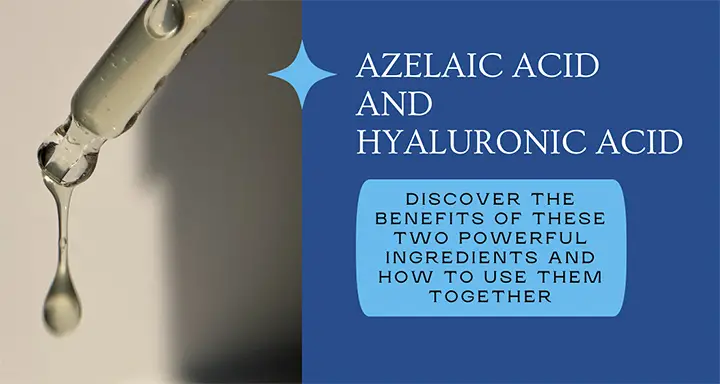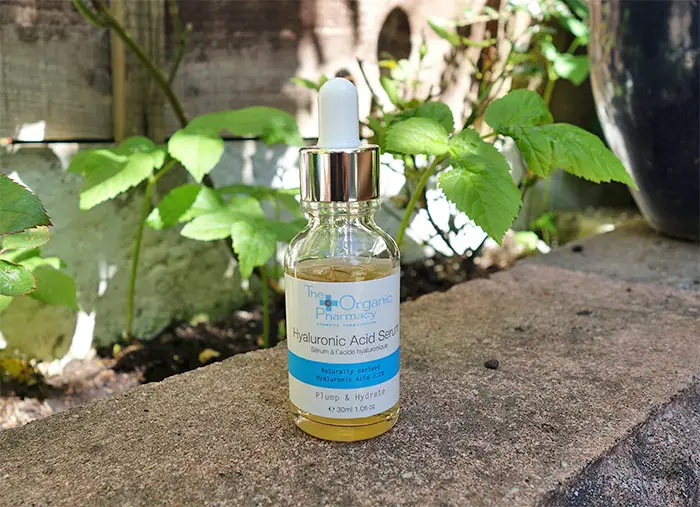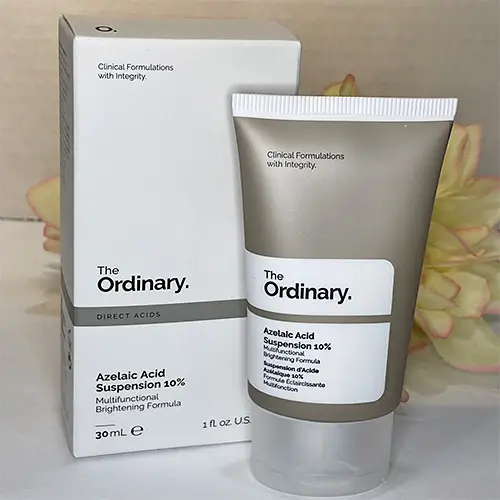
Azelaic and hyaluronic acids are favorites in skincare, known for their great benefits. But, figuring out how to use them together isn’t always straightforward. If you’ve been asking ‘Can I use azelaic acid with hyaluronic acid?’, you’re in the right place. Let’s break down how to combine these two effectively for your skin.
Table of Contents
- Quick Takeaways
- Azelaic Acid vs Hyaluronic Acid: What Makes Them Different?
- Can You Use Hyaluronic Acid and Azelaic Acid Together?
- How to Use Hyaluronic Acid and Azelaic Acid Together
- Potential Side Effects and Interactions
Quick Takeaways
- Compatibility: Azelaic and hyaluronic acids are safe and beneficial to use together for most skin types.
- Individual Benefits: Azelaic acid is great for texture and blemishes, while hyaluronic acid excels in hydration.
- Application Tips: Apply hyaluronic acid first for hydration, then azelaic acid. Remember to use sunscreen if azelaic acid is applied in the morning.
Now that we’ve covered the basics, let’s explore azelaic acid and hyaluronic acid in more detail to understand their full range of benefits and how best to incorporate them into your skincare routine.
Azelaic Acid vs Hyaluronic Acid: What Makes Them Different?
Hyaluronic and azelaic acids, both naturally found in our skin, play different but complementary roles.
Hyaluronic acid is a hydration hero, known for its ability to retain moisture, giving skin a plump, hydrated appearance. It acts as a magnet for moisture, helping skin cells hold onto water.

Azelaic acid, on the other hand, is a texture and tone champion. It accelerates skin cell renewal, aiding in brightening the complexion. It’s also effective in calming inflammation and is a go-to ingredient for managing conditions like acne and rosacea, as well as being a gentle solution for reducing hyperpigmentation.

Benefits of hyaluronic acid:
- It has anti-aging properties. Thanks to its ability to attract and bind large molecules of moisture, it helps keep the skin hydrated and plump. Thus, wiping out deep wrinkles.
- It hydrates the skin and can increase moisture levels in the skin up to 96%.
- It helps in wound healing and reducing inflammation, which can be particularly beneficial for skin recovering from acne or other irritations.
- Hyaluronic acid can also help protect against environmental aggressors like pollution and UV rays due to its antioxidant properties.
Benefits of Azelaic acid:
- Azelaic acid can be used to treat inflammatory skin conditions such as acne and rosacea thanks to its potent antibacterial and anti-inflammatory properties.
- It can equally be used to fade acne scars and other signs of hyperpigmentation.
- It has mild exfoliating properties, which help in unclogging pores and improving skin texture over time.
Can You Use Hyaluronic Acid and Azelaic Acid Together?
Yes, hyaluronic acid and azelaic acid can be used together effectively in the same skincare routine. They are suitable for all skin types and offer complementary benefits. Hyaluronic acid provides hydration, while azelaic acid works on blemishes and discoloration.
Both can be applied twice daily, but it’s important to remember that azelaic acid can increase skin sensitivity to the sun. Therefore, using sunscreen during the day is essential when incorporating azelaic acid into your morning routine.
How to Use Hyaluronic Acid and Azelaic Acid Together
Hyaluronic acid and azelaic acid are good for all skin types. However, it’s best to use them separately unless you’re using a product that already combines them. Applying them one after the other, instead of mixing them yourself, makes sure each ingredient works its best.
Now that we understand the importance of not mixing hyaluronic and azelaic acids unless they are pre-combined in a product, let’s dive into the step-by-step guide to applying them effectively for the best skin benefits:
1. Preparing Your Skin
Start with a clean face. Use a gentle cleanser to remove dirt and oils, preparing your skin to absorb the acids effectively.
2. Application Order: Hyaluronic Acid, Then Azelaic Acid
Start with Hyaluronic Acid: Hyaluronic acid, often found in water-based serums, is your first step. Its lightweight nature deeply hydrates and primes the skin. Apply it on damp skin to enhance absorption.
Wait Time: After applying hyaluronic acid, give your skin around 5 to 10 minutes. This waiting period allows the serum to fully absorb and prepare the skin for the next product.
Azelaic Acid Application: Next, apply your azelaic acid. Use a pea-sized amount. This ingredient is typically in oil-based serums or creams. It works well over the hyaluronic acid layer, focusing on skin texture and clarity.
Remember the Layering Rule: A key tip in skincare is layering water-based products first, followed by oil-based products and heavier creams. This order ensures each product is effectively absorbed and maximizes benefits.
3. Final Steps
- Finish with your regular moisturizer to lock in the benefits of both acids. If applying in the morning, don’t forget sunscreen to protect your skin.
Frequency of Use
- Hyaluronic Acid: Safe for daily use, both morning and evening.
- Azelaic Acid: Start with every other day and observe skin’s response. Adjust frequency as needed.
Consistency is Key
Adapting to Skin’s Response: Maintain a regular routine but be prepared to adjust based on how your skin reacts.
Potential Side Effects and Interactions
When introducing azelaic acid and hyaluronic acid into your skincare routine, it’s essential to be aware of potential side effects and interactions.
- Azelaic Acid Side Effects: While generally well-tolerated, azelaic acid can cause skin irritation, redness, and peeling, especially at higher concentrations. This is more common in sensitive skin.
- Hyaluronic Acid Side Effects: Hyaluronic acid is usually gentle but can sometimes draw moisture from deeper skin layers if applied in very dry environments, potentially leading to dehydration.
- Interactions with Other Ingredients: Be cautious when combining these acids with other active ingredients like retinoids, vitamin C, or AHAs/BHAs. These combinations can increase skin sensitivity or irritation. Always introduce new combinations slowly and observe how your skin reacts.
- General Advice: Conduct a patch test when introducing new products and monitor for any adverse reactions. If irritation occurs, discontinue use and consult a dermatologist.
Other articles related to azelaic or hyaluronic acid:
Alpha Arbutin vs Azelaic Acid
The Ultimate Guide to Azelaic Acid for Hyperpigmentation
Azelaic Acid: Transforming Under Eye and Eyebrow Health
Azelaic Acid for Rosacea
Mandelic Acid vs Azelaic Acid
Hyaluronic Acid: A Natural Solution for Seborrheic Dermatitis?

Petra Nakashian (previously Kravos) is a dedicated natural health and beauty blogger, driven by the loss of her parents to cancer, which led her to meticulously research beauty product ingredients. With over 10 years of experience, her in-depth knowledge has made her a trusted expert in the field. Founder of Be Healthy Now and Green Beauty Talk, Petra recently expanded her expertise with Beauty Insights Hub, exploring a wider range of beauty treatments. Committed to transparency and honesty, her work is a vital resource for navigating the complex world of beauty.

